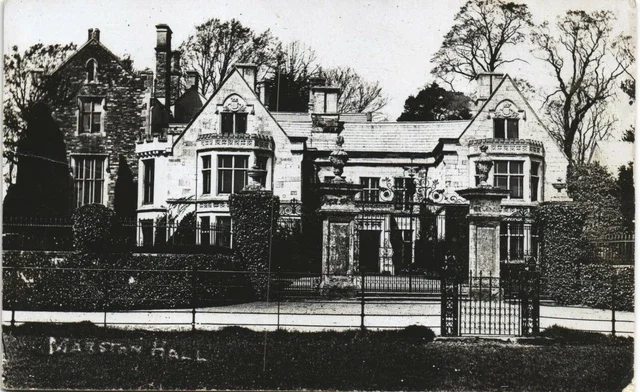
Marston Trussell, first recorded as Mersitone—meaning "marsh settlement"—is a picturesque village with a rich historical legacy. The parish also encompasses the nearby hamlet of Thorpe Lubenham. At the time of the 2001 census, the population stood at 163, decreasing slightly to 157 by 2011, a figure which included Lubenham.
The village name translates to "marsh farm or settlement," and its recorded history dates back to 1233, when it was held by Richard Trussell. The Trussell family remained prominent until the 14th century, after which the estate passed to other hands. Marston Trussell Hall, the manor house, was constructed around 1606. This Elizabethan-style mansion features notable interiors, including finely carved wood panelling in the drawing room. A Victorian extension—now demolished—once overshadowed the original structure. In the 1950s, a hidden priest hole was discovered within the hall. Today, the house sits within 12 acres (49,000 m²) of landscaped gardens, including a recently added sunken Italian garden and a stand of ten majestic Wellingtonia trees.
Following the Trussells' extinction, the estate became the seat of the Barwell-Ewins Bennett family. A hatchment dedicated to Henry Barwell, who died in 1763, is displayed in the parish church of St Nicholas.
Marston Trussell also holds a poignant connection to the English Civil War. During the Battle of Naseby in 1645, the River Welland, then in flood, trapped retreating Royalist soldiers between the river and the church, resulting in a massacre on land still referred to locally as Slaughterford Field.
A particularly striking feature of the village is the set of late 17th-century wrought-iron carriage gates at the entrance to the Hall. Originally crafted for the residence of Erasmus Norwich in Brampton Ash, they were relocated to Marston Trussell in the mid-1700s. Portions of the original wrought-iron railings still serve to divide the estate's fields. Like many grand houses, much of the ironwork was removed during the First World War to support the manufacture of weapons and munitions.
Today, the village comprises around 60 houses, the church of St Nicholas, and a charming Victorian village hall. A short walk westward leads to a tranquil 3-acre (12,000 m²) lake, well stocked with roach, perch, and pike. Adjacent to the lake is the village cricket pitch, home to a team formed in the mid-1980s that still plays friendly matches on Sundays.
A highlight of the village calendar is the annual Beer Festival, held each June. For one weekend, the village hall is transformed into The Rising Sun—a tribute to the long-lost local pub, The Sun Inn. Complete with hand pumps, a pub sign, and an array of real ales and ciders (including those from the nearby Welland Valley vineyard), the festival draws locals and visitors alike in celebration of community and tradition.



